Day 2 of a 3-day Summer Tour including a Nightjar Evening. It was another cloudy, grey and cool day, with a fresh NW wind in the morning swinging to the W by the afternoon. Again, thankfully it stayed mostly dry, at least until later in the evening. It seemed a rather unpromising day, but we were in for a nice surprise! We spent the day in NW Norfolk and then made another outing to look for Nightjars in the evening on one of the local heaths.
Our destination for the morning was Snettisham, for as long as the weather held out as it was forecast to rain. A family of Swallows fluttered overhead in the wind as we got out of the minibus. A couple of Greenfinches were singing in the bushes as we walked up the road to the gate.
As we walked into the Coastal Park, there were lots of dog walkers – one couple with four dogs off the lead walking in just ahead of us and someone else walking back with another. Perhaps unsurprisingly, there were no birds feeding on the ground in the small open area by the concrete blocks today, and the bushes here were quiet too in the cool and windy conditions.
Coming out into the larger open area beyond, a Common Whitethroat came up out of the long grass and flew into a small bush. There were a few Linnets in the bushes here too. A family of Stonechats flitting between the bushes on the bank were followed around by a couple more Whitethroats.
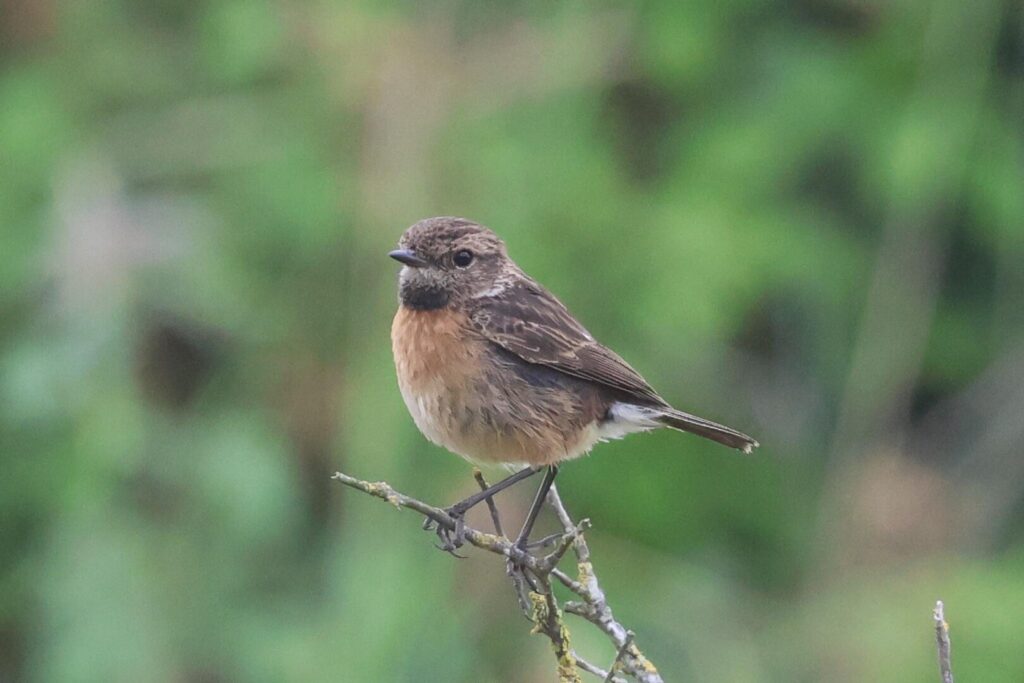
A succession of large flocks of waders flew high overhead, mostly Black-tailed Godwits but with a single smaller group of Knot. They were coming in off The Wash and dropping down towards the marshes beyond the inner seawall. So we decided to climb up the bank to check out what was going on out on The Wash.
It was not meant to be a big tide today and high tide was not until 11.30am so we were expecting there to still be lots of exposed mud. So as we got up onto the seawall we were surprised to see the tide was already in, presumably driven in early and higher than expected due to the wind. A large flock of Black-tailed Godwits was visible very distantly on the mud away to the south, off the Pits. It took off and flew round and there seemed to be more flocks much further down round the edge of The Wash. A few Oystercatchers flew past, but otherwise there wasn’t much else to see here now.
We dropped back down into the Park and walked north. A couple of Reed Warblers were singing half-heartedly in the reeds and we came across another couple of Whitethroats. There was no sign of any Turtle Doves today though, probably not helped by the number of dog walkers this morning. Presumably in the wind, the people preferred to walk through the shelter of the bushes rather than along the beach.
As we came out into the next open area, we could just hear a Grasshopper Warbler reeling. We were not helped by the wind, which was carrying the sound away from us. Walking round to the other side of the bushes where the noise seemed to be coming from, we could hear it much better now. It didn’t take long to find the Grasshopper Warbler reeling from half way up a dead tree.
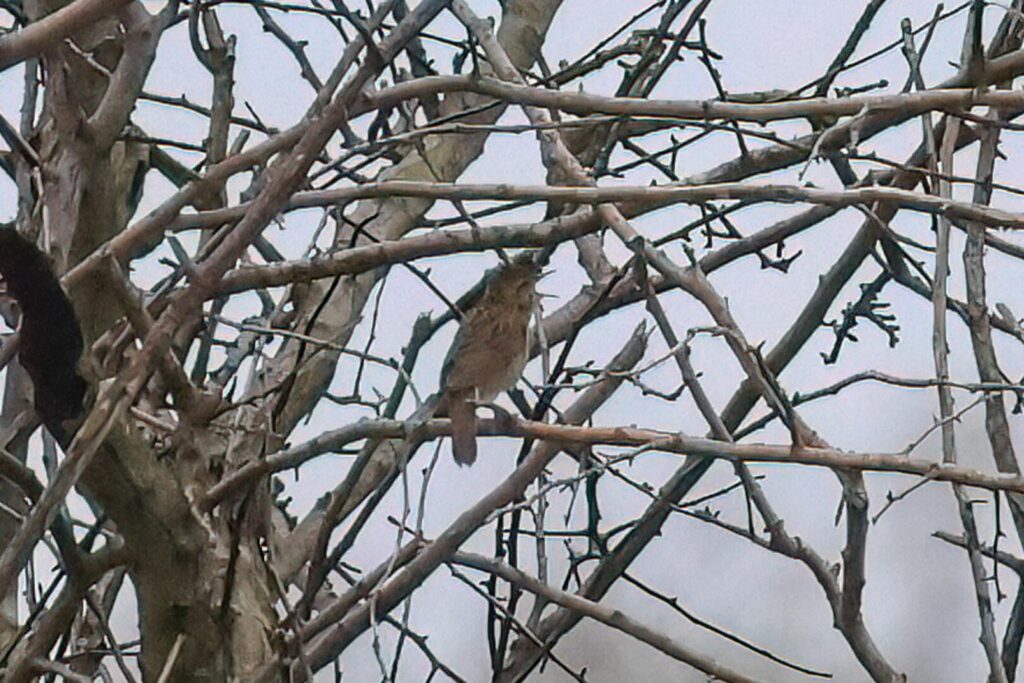
We got it in the scope and could see its bill open and the volume rising and falling as it turned its head from side to side. The Grasshopper Warbler dropped down into the grass out of view but we could still hear it on and off and fairly quickly it came back up into the trees again. It was a good day for them, as a bit further up we heard another Grasshopper Warbler reeling. They are presumably between broods at the moment, so have started singing again.
Cutting across to the inner seawall, we climbed up on the footpath. We could see a huge flock of Black-tailed Godwits roosting on the marshes here, a little to the south of where we were. With their bright rusty breeding plumage still, they were remarkably well camouflaged against the red-browns of the marsh vegetation. There were lots of geese, Greylags, Canada and Egyptian Geese. Four Spoonbills were tucked in behind a bank closer to us and a larger group were roosting further down.
There didn’t seem to be much on the marshes at the north end today, most of the waders seemed to be the other way. It was windy up on the seawall too, so we decided to start making our way back south and check out the Godwit flock to see if anything was with them. We walked a short way further down and stopped to scan. There was nothing with them but we could see there were even more Black-tailed Godwits now, at least 1000 roosting on the marshes. Very impressive!
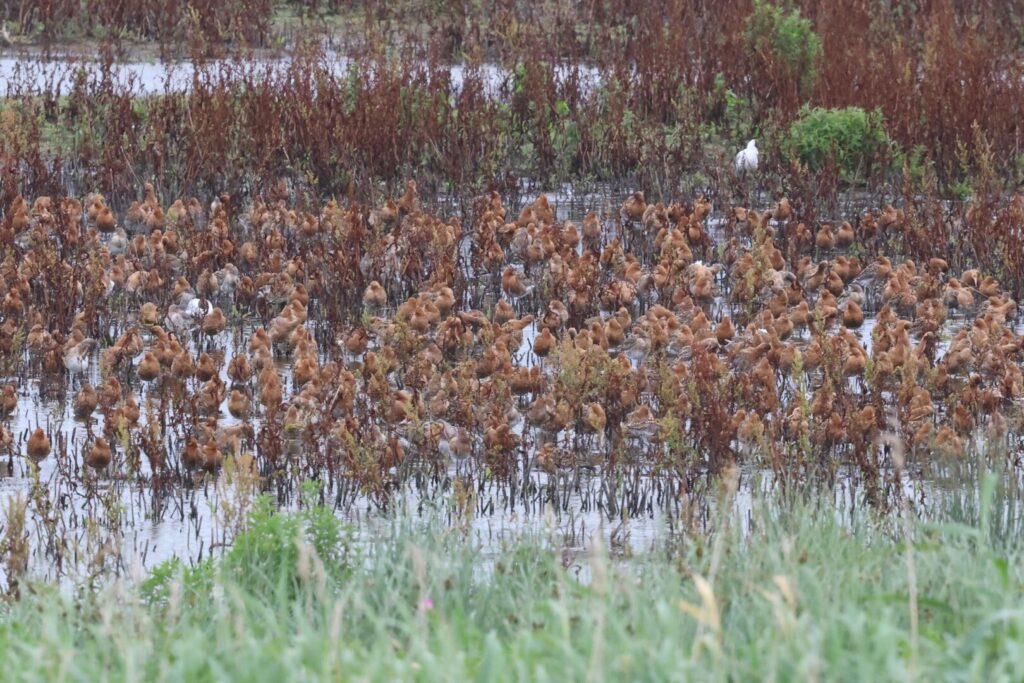
We were hoping to find the small group of Knot with the Godwits, but while we were scanning through, one of the group spotted a bird hovering further down towards the southern end of the marshes. We turned to look and immediately recognised it as a White-winged Black Tern! A rare visitor from eastern Europe, we had a quick look from here in case it flew off, then hurried down to the far end.
The views of the White-winged Black Tern were much better from further down. A moulting adult, we could see its still mostly black body, with just some patches of white now around the head and neck. This and the black underwing coverts contrasted with its white wings and tail. A very smart bird indeed! It was very active, moving up and down over the marshes, hovering over the pools.
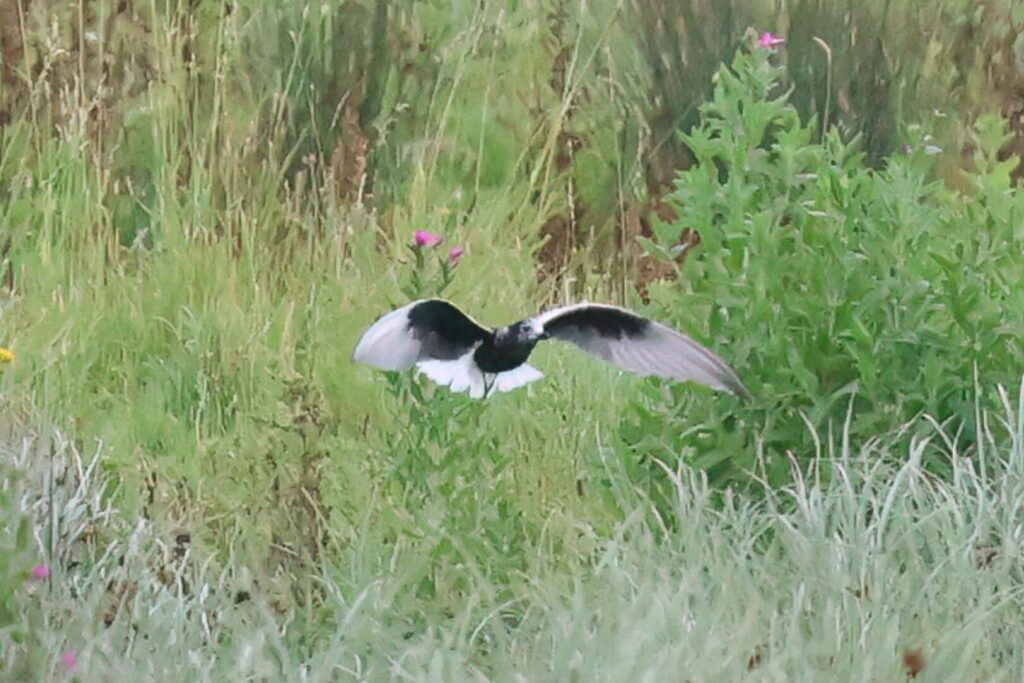
Last month, there had been a report of a White-winged Black Tern exactly here which had turned out to be a Feral Pigeon. So perhaps unsurprisingly there was some scepticism initially when we put out the news, until we confirmed that we were actually watching the bird!
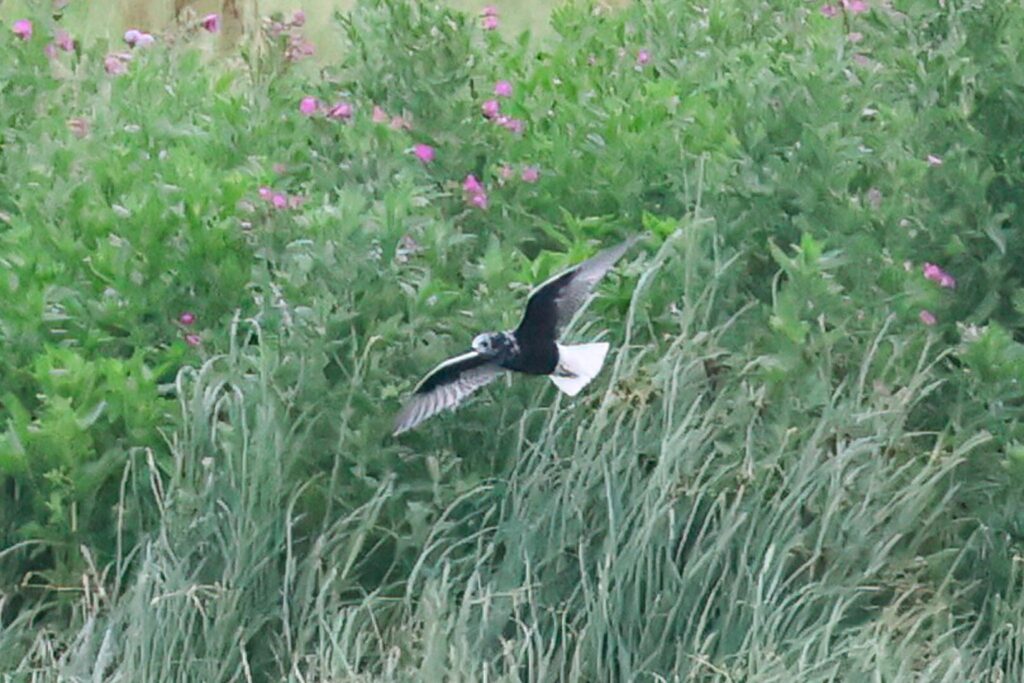
While we waited for the first birders to arrive, we continued to scan the marshes. The long-staying Black-winged Stilt of uncertain origin appeared out of the vegetation. It is ringed with what appears to be an aviculturalists ring, which suggests it has probably been released from captivity. The larger flock of Spoonbills were dozing in front of us, doing what Spoonbills like to do best. There were a few ducks here, including a single drake Wigeon.
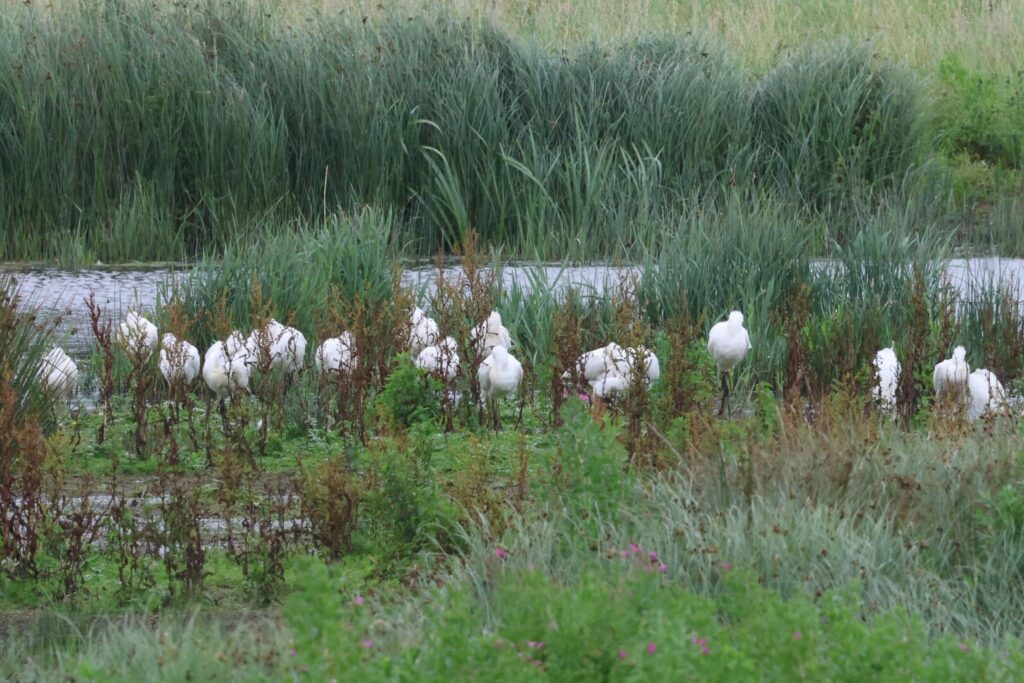
As people started to arrive, we began to walk back. One of the locals told us that there had been two Turtle Doves down along the shore by the RSPB pits earlier, so we decided to have a quick look down there next.
As we got down to the edge of The Wash, it was just after high tide but even with the wind it had not been enough to get the water right in. There were several Oystercatchers along the shingle bank, good to see several juveniles too. A larger roost of Oystercatchers was distantly out on the mud, along with scattered groups of Redshank and a few Dunlin, but most of the waders were presumably still further round out of view.
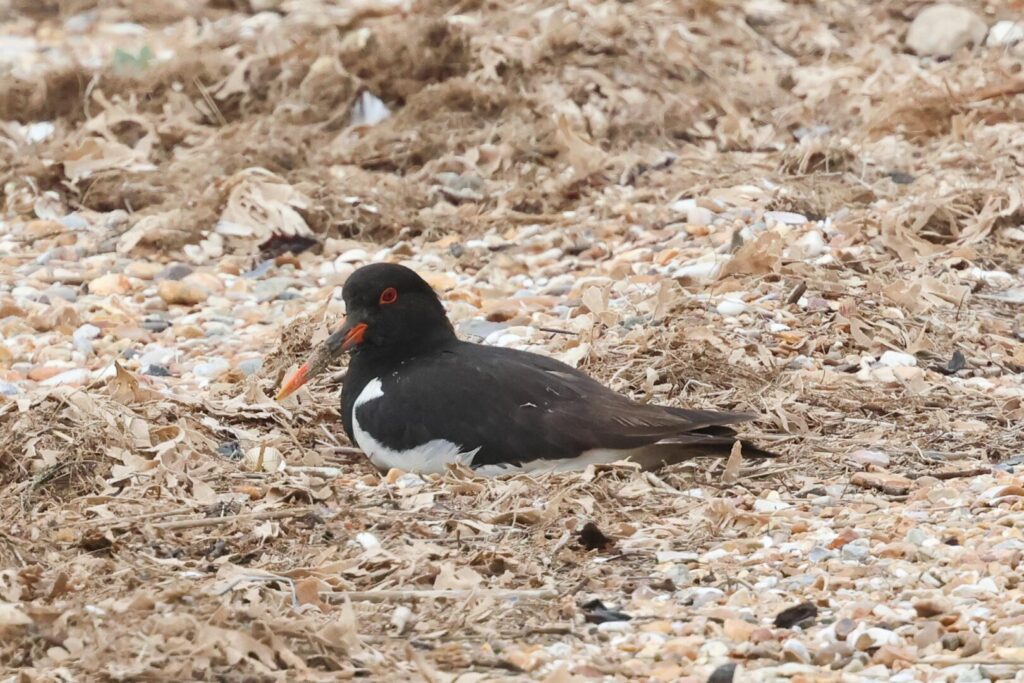
There were good numbers of Shelducks on the mud too, along with a few terns. As well as mixed groups of Sandwich and Common Terns, we found a couple of Little Terns hovering out over the shallow water beyond.
We walked on down to Rotary Hide. The Turtle Doves had apparently been here earlier, but there was no sign now. We went in to the hide for a quick look at the Pit and could immediately see a group of redshanks on the rocks in the middle. Through the scope, we could confirm there were 8 Spotted Redshanks with 5 Common Redshanks. The Spotted Redshanks are already moulting quickly, but had still retained much more of its black breeding plumage still. There were lots of Black-tailed Godwits roosting on the back towards the south end and Common Terns nesting on the islands.
We thought we would head back out now and look for the Turtle Doves further down along the shore. But as we were still packing up our scopes, we looked out to see two fly past the window. Unfortunately we lost sight of them from the hide and by the time we got outside they had disappeared. Two people walked past, up from the south end, and had obviously just flushed them from the beach. If only we had gone out a few minutes earlier!
There was no sign of the Turtle Doves up along the shoreline further north, so we feared they had flown off. It was still rather breezy though, so we had an idea they might be on the sheltered side of the seawall. We walked down to the causeway and there they were, perched in the bushes. An adult and a juvenile, we got them in teh scope and had a good look at them before they were flushed by two cyclists on the path. They flew round over the Pit and disappeared off to the south.
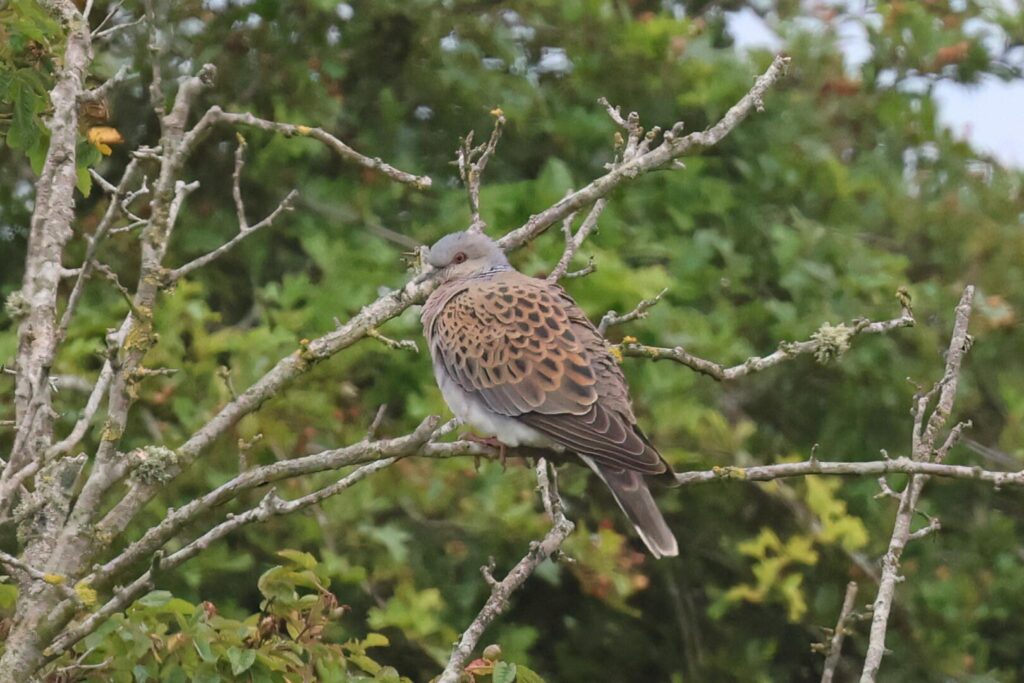
It was time for a later than planned lunch when we got to Titchwell. As we ate in the picnic area, we could see the breeding pair of Spotted Flycatchers in the trees just beyond and we had some very good views of them. A Treecreeper appeared briefly too.
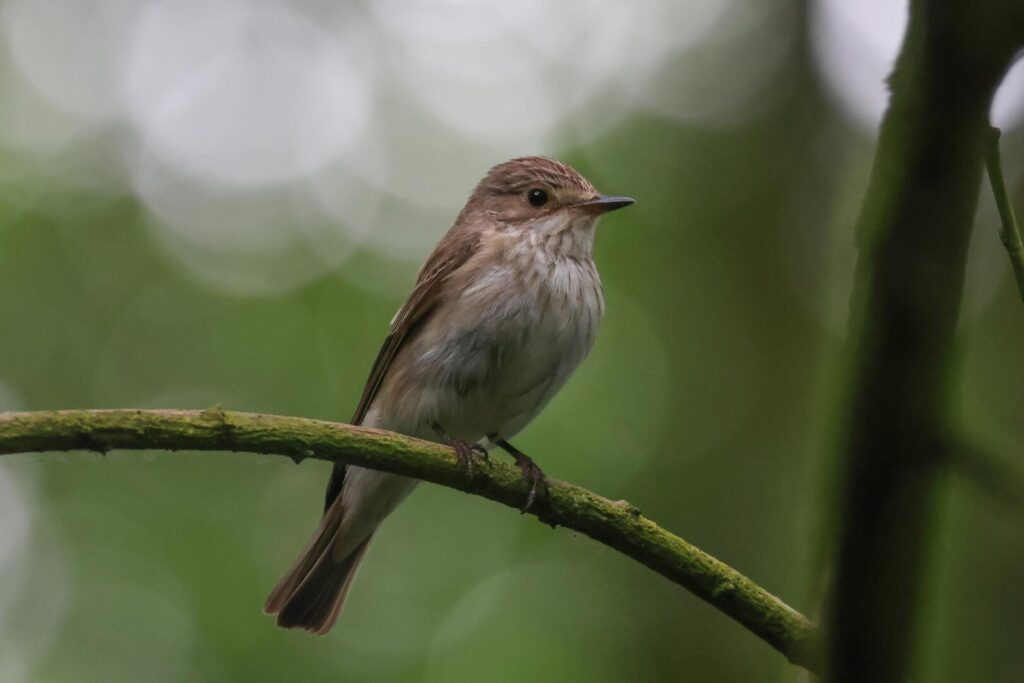
After lunch, we made our way out onto the reserve. We had a quick look at Patsy’s Reedbed first, as a Red-crested Pochard had been reported earlier. There were lots of ducks, all the drakes in brown eclipse plumage now. We could see three Common Pochard, several Wigeon, Teal, Gadwall and Mallard, but no sign of anything else.
Walking back round via Meadow Trail, we headed up the main path next. A Marsh Harrier was out over the reedbed and there were just a few Coot on the Reedbed Pool. We could hear one or two Reed Warblers singing but otherwise it was fairly quiet in the reeds.
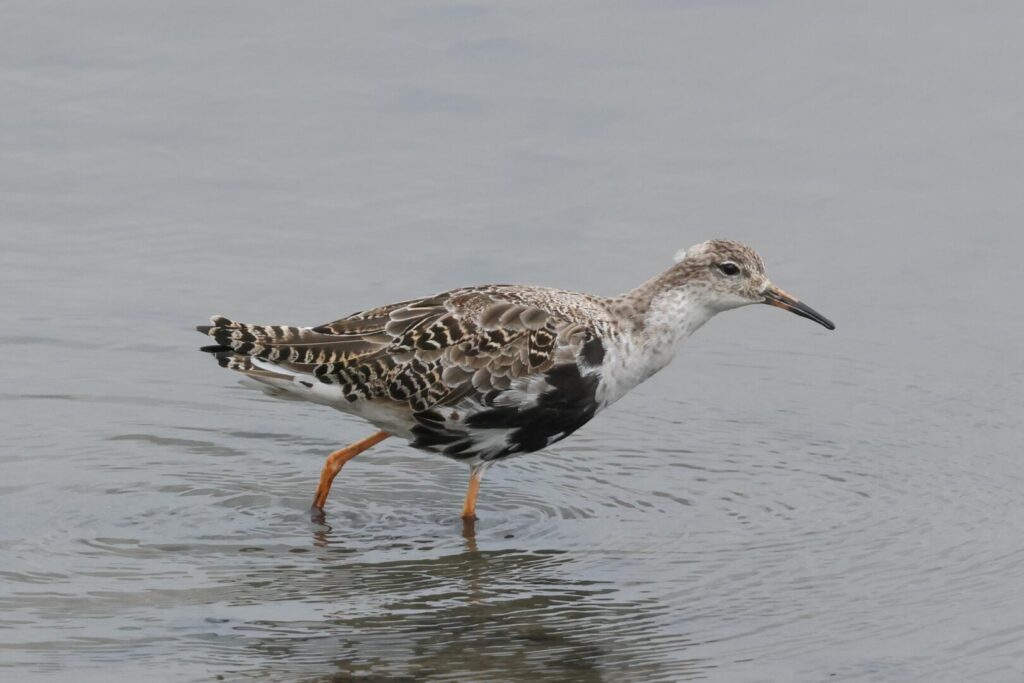
Scanning the Freshmarsh from the bank by Island Hide, the first compartment held mainly gulls and Avocets, along with a few Black-tailed Godwits. Further up, the water level was lower on the next compartment and there were more waders, including a close moulting male Ruff, a juv Little Ringed Plover, and several more Black-tailed Godwits. Around the islands towards the back, we found a single red Red Knot, still in breeding plumage, a Spotted Redshank, more Ruff and a couple of Common Sandpipers.
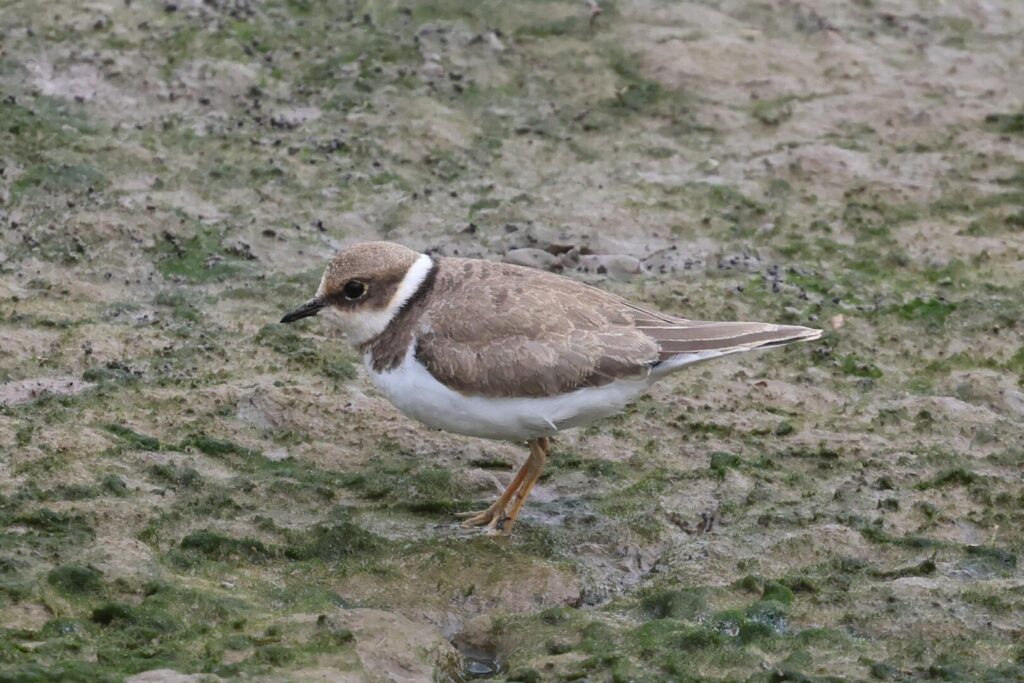
The weather was still OK, so we decided to head straight out to the sea. A quick look along the channel on Volunteer Marsh revealed just more Black-tailed Godwits, Redshanks and a couple of Curlews. Another Knot, a grey one this time, was with the godwits on the Tidal Pool.
Out on the beach, the tide had still not uncovered the mussel beds. There were some waders feeding on the beach but they were being pursued round by a photographer. We could see a few Sanderling in with a larger flock of Knot but they flew off west up the beach just after we arrived. A couple of Bar-tailed Godwits were further down towards Brancaster, along with a Spoonbill.
There was no sign of anything on the sea. A few terns flew back and forth offshore, including a couple of Little Terns closer in. Two Gannets flew past right out on the horizon. We could see all the Sandwich Terns distantly in the colony on Scolt Head.
There were darker clouds coming in off the sea now, so we decided it was a good time to head back. We were heading out again this evening, so we drove back to the guest house for a break and dinner before we met again.
Nightjar Evening
We met again at 8pm and headed out to see if we could find any Barn Owls first. The weather forecast was for rain later, but it was dry for now at least, if still cool, cloudy and rather breezy. We checked one nest box on our way but there was no sign of anything around the box and the young here should have fledged now.
Down to the grazing marshes, we drove round to see if there was anything out hunting but there was no sign of any owls. We got out to scan and could see a distant Spoonbill flying past. A smart grey male Marsh Harrier flew overhead. We thought we might check another owl box, but as we drove over we could see that the light was already starting to go. With our eyes on the main prize, we decided to head straight up to the heath so we would arrive in good time.
There were a couple of Song Thrushes and a Robin singing as we walked out onto the heath. Once we got into position, we didn’t have to wait too long before we heard our first Nightjar call. We looked over to see a male flying in over the gorse and over the path ahead of us. It flew up into the trees and we could see it flying in and out of the tops, hunting for moths.
Another Nightjar started churring intermittently further over, and the male we were watching churred briefly in response. We couldn’t see where it had landed though, presumably somewhere high in the pines, and it was soon flying round again. It flew back over our heads and back out over the heath.
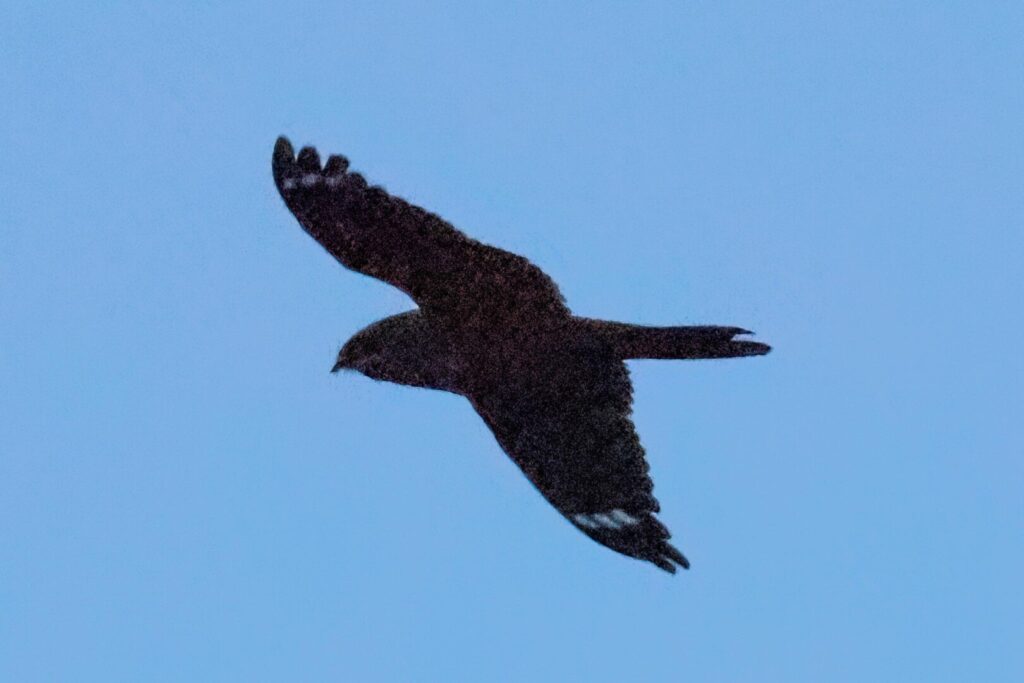
Shortly afterwards, the male Nightjar came in again, this time accompanied by a female, lacking the white flash across the wings of the male. They came right over our heads, checking us out, and we then watched the two of them fly up into the tops of the pines together. The male didn’t stay long in the trees and headed back out over us and disappeared onto the heath again. The other male Nightjar was still churring on and off and the male we had been watching started up too now, from somewhere in a distant oak tree.
The weather had been forecast to deteriorate but we had been lucky so far. Now the mist rolled in over the trees and it seemed to go a bit quieter, so we started to make our way slowly back. There was no sign of any Nightjar activity on the next territory over but further on we found another male churring very close to the track. The light was going fast now and we couldn’t see it but we stopped to listen to it. A nice way to end our evening on the heath.
It was starting to drizzle now and we had had the best of it. Time for bed.
















